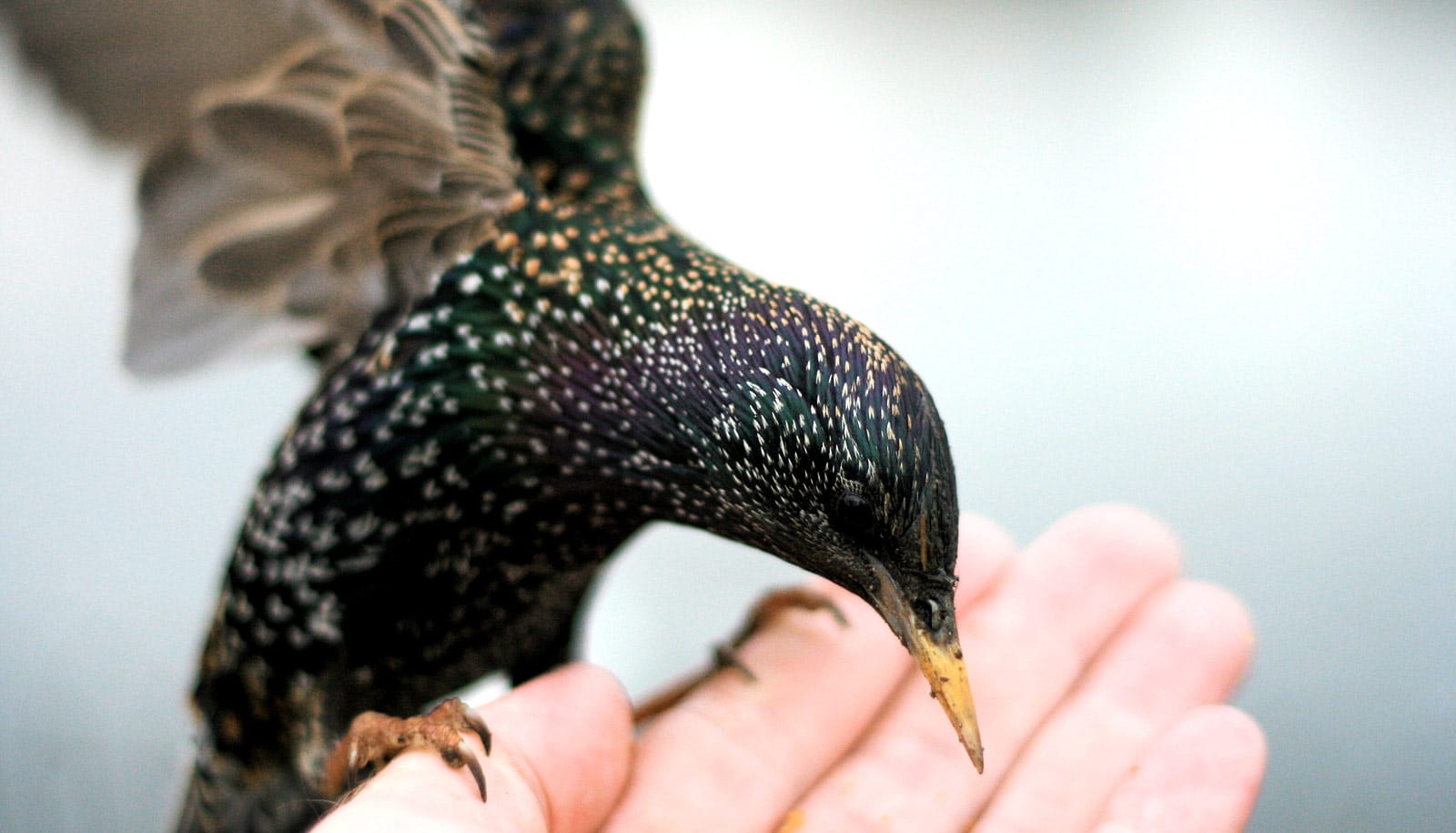A tiny, wireless implant can rapidly change the pitch of adult songbirds’ songs. The goal is to study and better understand human communication and speech.
There’s limited scientific understanding of how human brain regions responsible for speech and communication work. Consequently, knowledge of how to improve challenges such as speech impediments or language acquisition is limited as well.
Using an ultra-lightweight, wireless implant, a University of Arizona team is studying songbirds—one of the few species that share humans’ ability to learn new vocalizations—to improve scientific understanding of human speech. A paper about their work appears in the journal Nature Communications.
“Using new methods of antenna design and optimized electronics, we were able to shrink the devices dramatically compared to existing versions, to about a third of the size of a dime and as thin as a sheet of paper,” says lead author Jokubas Ausra, a biomedical engineering doctoral student in the Gutruf Lab, where the team created the devices.
There are several ways the device can be used to study the link between brain behavior and vocalization. It can monitor the bird for slight temperature changes that indicate when a bird is most likely to sing. Using a technique called optogenetics, researchers can modulate neuron groups in the brain regions used for birdsong. In this study, the team found that remotely controlling specific neurons during birdsong using their unique device caused the song to change pitch.
“We are excited to expand the toolbox of neuroscientists and hope to enable many exciting studies that decipher the working principles of the brain,” says senior author Philipp Gutruf, assistant professor of biomedical engineering in the university’s College of Engineering.
The Gutruf Lab has developed other wireless lightweight devices used to monitor brain activity in rodents, but birds’ ability to move in 3D space represents an added challenge. This tiny device allows the birds to move without restriction—a breakthrough enabled by careful management of the energy sent wirelessly to the implant.
“Because of the small size and light weight, the birds can move freely and live permanently with the implant without affecting their behavior or health, which opens up many possibilities to study the basis for vocal communication,” says co-senior author Julie Miller, an assistant professor of neuroscience and speech, language, and hearing sciences.
The team’s next goal is to expand device capabilities to also record neuron activity. This could allow researchers to visualize brain activity during song learning and performance to gain a deeper understanding of the underlying brain mechanisms.
Source: University of Arizona

